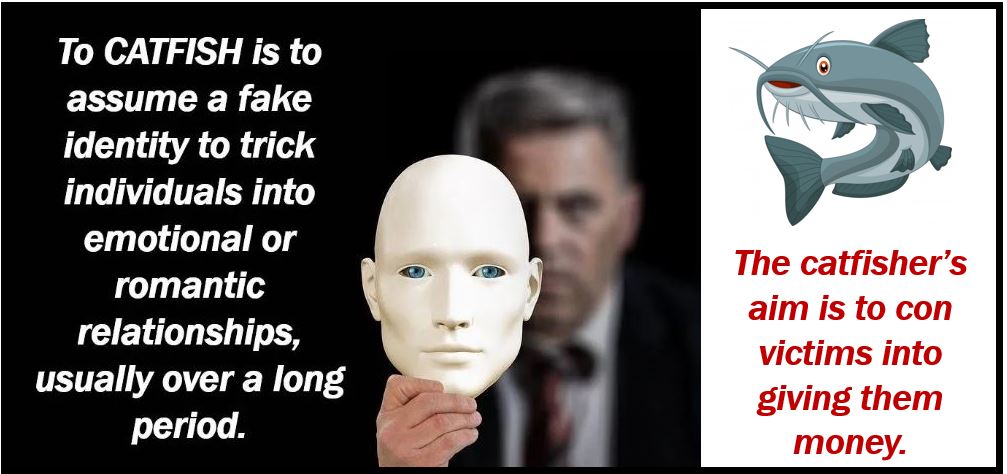Catfishing is a fraudulent activity in which somebody creates a fake identity on a social networking platform. Typically, the perpetrator targets a specific individual for fraud or abuse.
Some con merchants assume a fake identity to trick victims into romantic or emotional relationships. These relationships can last for a very long time. The ultimate aim of the perpetrator is to extract money by deception, i.e., con the victim.
Often, these individuals will meticulously create backstories and social circles online that lend an air of legitimacy to their fabricated personas.

For scammers to be successful, they must not meet up with their victims. If they did, their con would be ruined.
We call somebody who engages in catfishing a catfish.
Signs of possible catfishing
- The writer makes spelling or grammar mistakes which a native speaker would not make.
- They ask for money.
- Some of their stories are very elaborate.
- The relationship rapidly develops into a romantic one – perhaps too quickly.
- They claim to be extremely ill or are suffering in some other way.
- You can never communicate with them by phone or via a webcam.
- They have either no or few friends in their social media platform.
- They do not have a permanent address because of their job.
- It all seems too good to be true.
If you spot any of these catfishing red flags, either in your relationship or of somebody you know, take action immediately.
In one of our previous articles, I explained that catfishing is on the rise worldwide. Not only should you be alert for such scammers for yourself and friends, but also your children.
The emotional repercussions for individuals who have been deceived can be profound, often leading to long-term trust issues and psychological distress.
Video explanation
In this visual guide presented we explain what “Catfishing” is using straightforward language and easy-to-understand examples.
